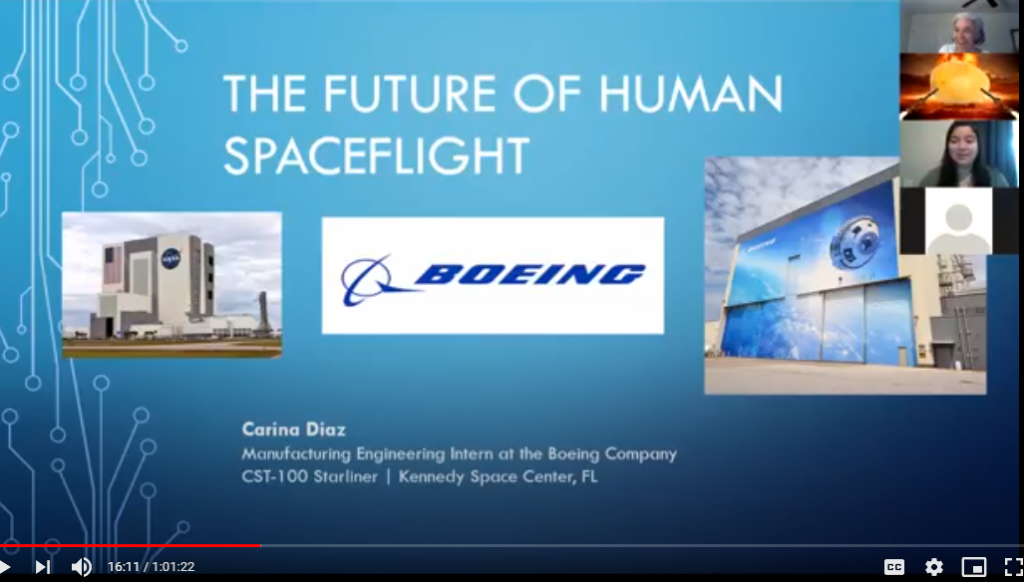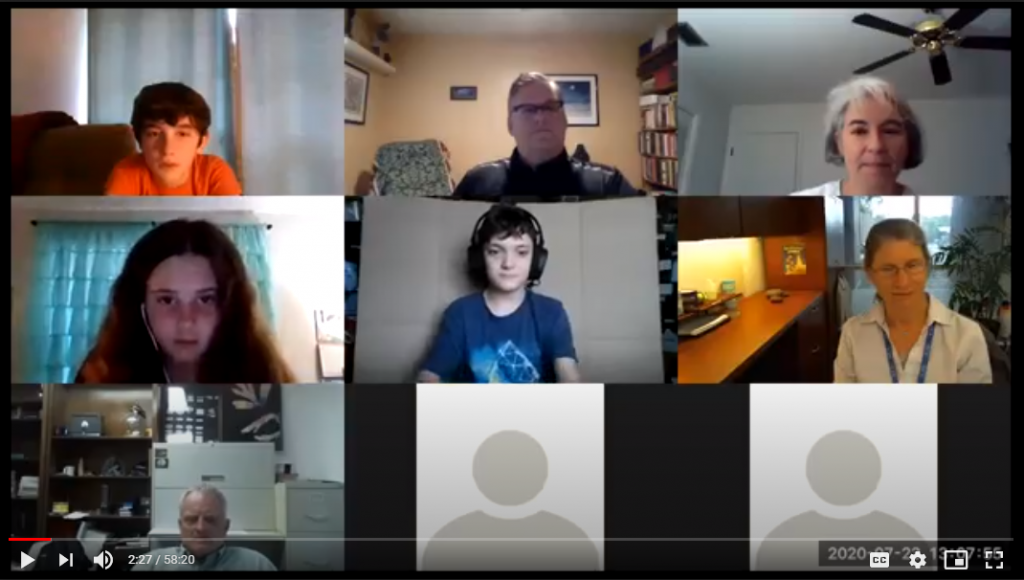While many educational outreach efforts to local K-12 schools have been cancelled due to COVID-19, the STRIDE Center has remained engaged with students remotely. STRIDE K-12/Technology Transfer Coordinator, Ondine Wells, mentored the Howard Bishop Middle School Future City Engineering Club twice a week through the summer via Zoom. Started last year, Howard Bishop’s Future City afterschool club won second place in the Tampa Future City regional competition (FutureCity.org) in January 2020. Eager to get a head start on next year’s competition, the students met remotely throughout the summer. This years’ competition theme–How to Build a City on the Moon 100 Years in the Future–presents many new challenges for the students. These include thinking about what types of transportation they would need to both get to the moon and to live on the moon.

Over the course of the summer, students learned about the historic Apollo 11 landing on the moon in 1969 as well as the current NASA Artemis mission to return to the moon by 2024. The Club conducted Zoom interviews with two UF students who are working on aspects of this exciting mission. Ph.D. Candidate and NASA Space Technology Research Fellow, Andrew O’Connor, shared his research on new intended to shield astronauts from radiation. Carina Diaz, a UF senior in the UF Department of Material Science and Engineering and summer intern at Boeing, shared her experience working on the CST-100 Starliner–a space capsule that can accommodate seven passengers and/or cargo for low-Earth orbit missions. The Future City team is also researching how autonomous mining robots could extract oxygen and metals from the moon’s surface and construct future habitats.
In addition to transportation, students have explored how their lunar city of the future would provide vital resources for survival such as oxygen, water, and food. Dr. Robert Ferl and Dr. Anna-Lisa Paul, the Principal Investigators of the UF Space Plants Lab, shared tips on how much space would be needed to grow food for each resident and how to conserve and recycle every drop of water. Beyond the engineering and scientific challenges of growing food on the moon, Dr. Ferl and Dr. Paul spoke to students about the all-important “human-side” of living on the moon. For example, future residents may need to adapt to eating unusual protein sources such as worms. Not to be discouraged, the Future City students shared their own experiences with eating crickets and mealworms! Perhaps one day, a Future City team member will be one of the first real residents on the moon.
